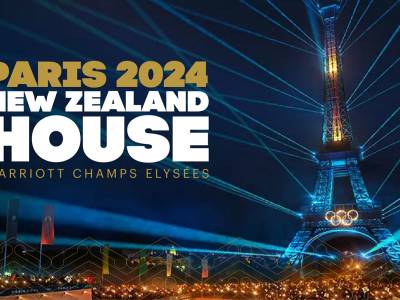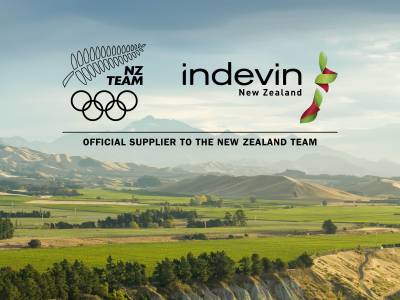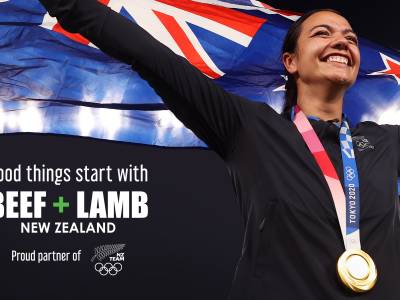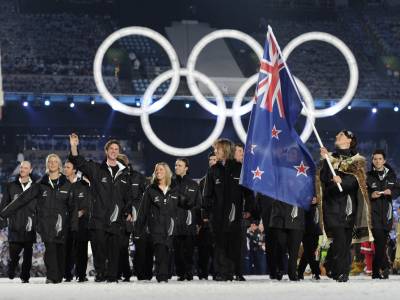Sailing is one of New Zealand's most successful Olympic sports and has produced some of our most well known sporting personalities, with the likes of Barbara Kendall and Russell Coutts.
Sailing (often also referred to as yachting) features races between boats powered by the wind, using sails.
While sailboats come in a multitude of different shapes and sizes, there are essentially five main classes used in the Olympics with only one or two sailors per vessel.
The boats race around a set course marked by buoys, and in most cases 11 races are used to determine the medallists.
Qualifying – The Road to Rio
The number of athletes at sailing events in Rio is limited to 380, with nations limited to one boat in each of the 10 events.
The allocated places per event varies from 20-46, but in each case the first and major pathway to qualification was via the 2014 ISAF Sailing World Championships in Spain, where 75 percent of Olympics places were awarded. These World Championships featured races in all 10 Olympic classes, with the top finishers qualifying for Rio. After that, each class had its own World Championship event in 2015, which offered an additional smaller number of places in the respective Olympic race.
The final one or two places are awarded to the top boat(s) in the respective event in continental championships or qualifying events in 2015/16. New Zealand crews qualified for the 2016 Rio Olympics regatta in all 10 events at the 2014 ISAF World Championships, one of just three nations to qualify a full quota of boats for Rio at the first opportunity - Great Britain and France were the others.
Exactly which Kiwi sailors crew those boats is determined by a selection process that takes into account performances over a number of international events.
"All the NZL Sailing Team are talented sailors who started out at grass roots clubs around New Zealand and have got to this level through commitment, dedication and hard work."
"Over recent years a key focus has been to build a strong, collaborative team culture among the NZL sailing team with the aim of being able to perform under pressure and to do everything possible to make their boats go faster." - Jez Fanstone, High Performance Director, Yachting New Zealand
Competition at Rio
The Olympic sailing regatta will take place from Monday 8 August 2016 to Wednesday 17 August 2016 at the Marina da Glória in Copacabana.
Men: Five competition classes – RS:X, 470, Finn, Laser and 49er
Women: Four competition classes – RS:X, 470, Laser Radial and 49erFX Mixed: One competition class – Nacra 17
The Nacra 17 is a multi-hull (catamaran) vessel, RS:X is a sailboard (windsurfer) and the other classes are single-hull dinghies.
Races are scored using a low point scoring system in which the boat with the lowest tally at the end of the competition wins gold.
Each class concludes with a medal race but before that they race either 10 or 12 depending on the class – 10 Finn, 470 and Laser classes; 12 for Nacra 17, RS:X and 49er classes.
The first-placed boat in each race gets one point; the second two points and so on. Sailors may exclude their worst score in those first 10 (12) races. The 10 boats with the lowest scores progress to the medal race where points are worth double.
The Stars of Sailing
Likely to headline New Zealand’s sailing team when named in 2016 will be 470 competitors Polly Powrie and Jo Aleh, who became New Zealand’s first female gold medallists in a dinghy class ever with their London 2012 victory.
Peter Burling and Blair Tuke, silver medallists in 2012, are naturally chasing 49er gold in Rio’s Marina da Glória and have posted a long unbeaten streak after the London Olympics, winning both the 2014 and 2014 49er World Championships. They are now balancing the demands of an America’s Cup campaign with Emirates Team New Zealand in 2017, with Burling named as helmsman. Their main challengers in 2016 may be friends and training partners, Nathan Outteridge and Iain Jensen, who won gold in the event for Australia in 2012.
The main threat to Alex Maloney and Molly Meech’s chances of claiming the first ever 49erFX Olympic gold medal could be Brazilian World Champions, Kahena Kunze and Martine Grael (daughter of the great Torben Grael), who will enjoy the home advantage in Rio.
Danish sailor, Jonas Høgh-Christensen, has unfinished business after the great Ben Ainslie edged the Dane to the gold medal in the Finn class in 2012. Rio will be Høgh-Christensen’s fourth and final Olympics, but he now faces Giles Scott who has emerged from Ainslie’s shadow to earn a World Championship title for Great Britain in 2014.
Did you know?
New Zealand’s tally of eight Olympic gold medals ranks us ninth on the list of most successful Olympic sailing nations. And with eight golds, five silvers and five bronze medals, sailing is New Zealand’s third most successful Olympic sport.
The 49erFX class has been added to the programme for Rio as the women’s two-person skiff class (replacing the Elliot 6m), and the Nacra 17 debuts as the mixed multi-hull.
The most successful Olympic sailor of all time is Denmark’s Paul Elvstrom. He won the first of his four gold medals at consecutive Games in 1948, and was still competing in 1988 at the age of 60.
New Zealand’s most successful Olympic sailor to date is windsurfer Barbara Kendall who has three Olympic medals to her name – gold in Barcelona 1992, silver in Atlanta 1996 and bronze in Sydney 2000.
After the 1996 games in Atlanta, the sport of yachting was to be known as ‘sailing’ to coincide with the Federation name change from `International Yacht Racing Union (IYRU)’ to `International Sailing Federation (ISAF)’, and then ‘World Sailing’ in 2016.
With eight golds, five silvers and five bronze medals, sailing is New Zealand’s third most successful Olympic sport.
The Los Angeles Olympics ushered in a period of sustained success for New Zealand, with medals at every Olympics except Sydney 2000.
Sailing Terminology
470 - A double-handed (two person) mono-hull dinghy with three sails. One sailor is attached to the boat via a trapeze (harness) allowing them, among other things, to counterbalance the force of the wind in the sails by standing on the edge of the boat and leaning out.
49er/49erFX - A double-handed high performance skiff dinghy characterised by its speed and ‘wings.’ Both sailors are in trapezes.
Bow - The front of a boat.
Buoy - A floating marker used to designate key points on the course.
Dinghy - A small boat characterised by having one hull and a centreboard. Laser, Laser Radial, 470, Finn are the classes of dinghy raced at the Olympics.
Centreboard/Daggerboard - An adjustable fin primarily used to stop the boat moving sideways through the water.
Finn - The men’s single-handed Olympic dinghy class. It features one main sail and is heavier than the other classes of dinghy.
Fleet racing - A format of racing where all entries race against each other around a course. Points are awarded relative to where a boat places in the race and are tallied over a set number of races.
Hull - The watertight body of a boat.
Laser/ Laser Radial - A single-handed mono-hull dinghy class with one main sail. A light, simple standardised design – very common around the world – means sailors rely more on their own fitness, agility and strength than other classes. The Laser Radial features a smaller sail than the standard Laser.
Leeward - The side furthest away from the wind.
Mark - A corner of the racecourse as defined by a buoy.
Medal race - The final race of fleet racing format where the points awarded for placings are doubled. This result cannot be discarded from the total score.
Multi-hull - A boat with more than one hull. A boat with two hulls is also known as a catamaran. The Nacra 17 class will debut in Rio as the multi-hull class, featuring mixed crews of one male and one female.
Sailboard - Combines elements of surfing and sailing with a sail attached to a long board. Sailboarding or board sailing is also known as windsurfing. The Olympic sailboard class is the RS:X which has been in place since 2008.
Skiff - A type of light, open dinghy with a self-draining hull. In Rio the 49er (men) and 49erFX (women) are the two skiff classes, each featuring two-person crews.
Stern - The rear of a boat.
Windward - The side closest to the wind. The windward mark is the mark at the end of the upwind (into the wind) leg of the course.
Timeline
1851 - International yacht racing began when a New York Yacht Club syndicate sailed to England where it won a trophy called the Hundred Guineas Cup (since renamed the America's Cup).
1900 - Sailing was first contested as an Olympic sport in Paris and has been included at every modern Olympiad since, except 1904.
1956 - Peter Mander and Jack Cropp were New Zealand’s first sailors to win a medal, claiming gold in Melbourne 1956 in the Lightweight Sharpie class.
1984 - Los Angeles Olympics – the gold medals won by Russell Coutts in the Finn class and Rex Sellers and Chris Timms in the Tornado class ushered in a period of notable success for kiwi sailors with medals won at every Olympics since, with the exception of Sydney 2000 – see the Olympic Medals table above.
2012 The London Olympic Games introduced the match racing event for women – a head-to-head contest of strategy and tactics between teams on two identical boats. Polly Powrie and Jo Aleh became New Zealand’s first ever female gold medallists in a dinghy class (Barbara Kendall won gold at Barcelona in 1992 in board sailing).
Tweet Share
Sailing Games History
-
Olympic Summer Games Tokyo 2020
1 -
Pacific Games Samoa 2019
-
Olympic Summer Youth Games Buenos Aires 2018
-
Olympic Summer Games Rio 2016
1 2 1 -
Olympic Summer Youth Games Nanjing 2014
-
Olympic Summer Games London 2012
1 1 -
Olympic Summer Youth Games Singapore 2010
-
Olympic Summer Games Beijing 2008
1 -
Australian Youth Olympic Festival Sydney Youth Festival 2007
1 -
Olympic Summer Games Athens 2004











